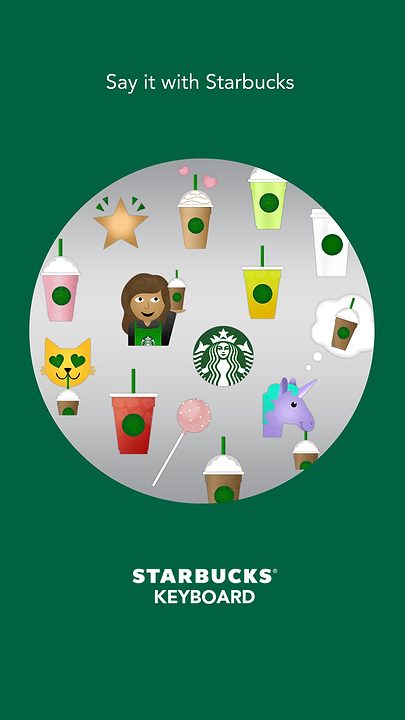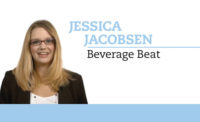Digital adds more complexity to shopper experience
Social networks, apps among most popular digital marketing




The term “information superhighway” might have first gained traction in the 1990s in reference to the Internet and other forms of digital communications, but the prominence of digital in Americans’ day-to-day lives has taken this “superhighway” to another level.
“The impact of digital is two-fold,” says Joy Joseph, practice leader of marketing productivity and strategic analytics for Chicago-based Information Resources Inc. (IRI). “One, it has created a highly informed shopper that is now more discerning about the alignment between their specific needs and consumption choices. This has created a proliferation of segments and microsegments.
“An increase of digital information/communication channels has resulted in a more complex consumer journey, with multiple engagement points for the marketer with the consumer,” he continues. “Marketers now have to not only evaluate what channels work best with different consumer segments, but also understand how to integrate online, offline and point-of-purchase marketing touch-points to engage across various stages of the shopper journey.”
Bryant Harland, senior technology analyst at Chicago-based Mintel, notes that digital communications also have allowed brand owners to connect with consumers on a more personal level.
“Digital has raised the bar on personalization and is forcing brands to become smarter about how and who they target,” he says. “If you look at web experiences on desktops and laptops, you can create recommendation engines based on purchase and/or browsing histories. If you consider mobile, you can get even more targeted. One of the biggest benefits of brands offering mobile apps is [that] they get a far larger picture of their customers.”
Although mobile apps offer a larger picture of these consumers, it is not without its challenges. “The biggest issue with mobile apps is that it requires a lot of effort on the part of businesses,” Harland explains. “Brands have to really put a focus on mobile to do it right, and they have to take advantage of the strengths of mobile devices (e.g., geo-targeting) to get the most value out of building an app.”
Despite the commitment a brand owner would have to undertake to create its own app, embracing app technology is valuable for businesses, according to Harland.
“[M]y perspective is that mobile apps and mobile engagement in general will become far more important for nearly every market,” he says. “The rapid adoption of services like mobile payment will raise consumer comfort with using mobile at every stage of the purchase lifecycle, and advances in mobile technology in general will give brands infinitely more engagement opportunities.
“If you consider things like product packaging, mobile can serve as a key channel for gathering information for consumers,” Harland continues. “For instance, barcode scanning apps offer a fast and convenient medium for price checking. Some brands are taking this concept further — with QR code scanning, they can provide infinitely more product information via a mobile app than could ever fit on a package.”
However, when it comes to digital marketing and advertising, social media networks are drumming up most of the interest from brand owners, Harland notes.
“Social media is big for advertisers because it allows for a robust amount of interest-based targeting,” he says. Because of Facebook’s single sign-on feature, it has a wealth of data that can link users’ behavior across multiple devices and has web behavior across numerous websites — this is huge for marketers looking to target based on interest as well as by specific demographics.
“Sites like Facebook are also good for reaching almost any audience because the majority of consumers, old and young, are on Facebook,” Harland continues. “Other social media sites are useful for reaching specific demographics. For instance, sites like Tumblr and Pinterest have a high rate of usage among consumers aged 18-34.”
Although social networks are popular digital portals in which to reach consumers, IRI’s Joseph says the investment that companies have made vary based on industry.
“This does vary by industry; services and durable goods are a bit ahead of the curve on digital adoption compared to [consumer packaged goods] (CPG), but CPG is catching up pretty quickly,” he says. “Channel-wise, in CPG, on average for every $2 spent on desktop platforms, $1 is being spent on mobile (versus say retail where mobile is about two-thirds of desktop). Platform-wise, digital budget tends to be split in varying proportions between display, social and search.
“Display is increasingly being shifted toward rich media and streaming (video) versus static banners,” Joseph continues. “Social is still predominantly Facebook and Twitter, but some progressive CPG brands are diversifying into other options. For instance in our mix studies, Instagram and Snapchat both show higher effectiveness rates with younger consumer segments versus Facebook, but of course they are still a small fraction of total social media ad-spend share.”
According to Facebook, it had 1.09 billion daily active users on average in March and 1.65 billion monthly active users as of March 31. On its website, Twitter reports having 310 million active monthly users. Instagram, which was bought by Facebook in 2012, reports on its website that has more than 300 million daily active users and more than 500 million monthly active users. Although Snapchat Inc. is a private company, a June 2 Bloomberg article reports that the messaging app has 150 million daily active users.
The engaged consumer
Among the allures to digital marketing and advertising is the engagement brands can create with consumers. With the various media platforms available to them, today’s consumers also can — and often do — simultaneously engage on multiple outlets.
“Consumers are increasingly engaging multiscreen,” IRI’s Joseph says. “They are on their smartphones creating content while sitting in their living room watching TV. A consortium study by ARF that IRI collaborated on indicates that digital enhances engagement on other marketing channels. This synergy can drive ROI up by 35 percent or more.
“Also given the complexity of the consumer journey today, precise retargeting using digital and mobile ensures that engagement throughout — from awareness/interest to conversion and retention,” he continues.
Emojis are another way CPG brands are increasing consumer engagement. The expressive icons can be used on apps and social media networks and have seen numerous brands roll out their own keyboards. Last year, Atlanta-based The Coca-Cola Co. released one for its flagship Coca-Cola brand, while Starbucks Coffee Co., Seattle, released its keyboard this summer. In addition to releasing a keyboard for its Pepsi brand, Purchase, N.Y.-based PepsiCo Inc. tied its release into its hashtag #PepsiMoji campaign, which included limited-edition cans featuring popular emojis, which also are available on the keyboard.
Demographics also come into play with digital marketing and advertising, with experts noting variances of engagement across age groups.
“Understanding demographic trends is critical for digital,” Mintel’s Harland says. “For example, younger consumers are generally more familiar with mobile technology, so brands can engage them through mobile comparatively easily; older consumers can be engaged through mobile, but may need to be taught why and how they should engage this way.
“Demographics also relate to how many different resources consumers will use on path to purchase,” he continues. “Typically, the more digitally engaged consumers are, the greater the variety of resources they use when shopping or just looking for information about brands/products/services. This will also influence which digital channels are important … even when considering channels like social media, which specific sites brands will want to use will vary depending on who they’re targeting.”
IRI’s Joseph also notes digital’s varying degrees of engagement for age demographics as well as cultural and regional impacts.
“There are definitely demographic differences in digital engagement by consumers,” he says. “For instance, millennials are quicker to adopt new digital platforms like Instagram and Snapchat compared to baby boomers and Hispanics, who engage more on mobile compared to desktop. The difference, however, extends beyond demographics to lifestyles and regions as well. For instance, urban millennials tend to have a much more on-the-go lifestyle compared to suburban millennials. So, mobile platforms may be better to target urban millennials.”
However, to ensure that brand owners’ media-spend on the various digital outlets are operating effectively, experts say that companies are comparing two different models: the traditional Marketing-Mix and the more recent Attribution modeling.
“What we have found out is each of these two has their strengths and shortcomings, and together they give a more holistic measurement,” Joseph says. “In a case study we shared in our recent webinar, we looked at a 12-week Cross-Media Campaign for an OTC health brand. Attribution overestimated [the] online video portion of the campaign as it did not account for a regional retailer promotion, which the Marketing-Mix model did adjust for.
“On the other hand, [the] Marketing-Mix model underestimated the highly targeted display portion of the campaign because it was measuring impact at the total store-level,” he continues. “Ultimately, the most accurate insight came from combining the output of the two.”
Mintel’s Harland anticipates that analytics software programs will continue to proliferate, offering another tool for brand owners to analyze their media-spend.
“This is an area that continues to grow in sophistication and accuracy as well as scalability,” he says. “First, a number of brands are entering the field to make analytics more accessible to business users; this will mean companies without the resources to hire data science or statistics teams will be able to do some basic analytics on their customer data. Other businesses will still leverage their data science/stats teams for advanced analysis and algorithm building, but these teams will no longer need to field requests that are far below their skill sets.
“Secondly, there is a lot of movement to make analytics more scalable,” he continues. “Currently, advanced projects based on analytics are built for a specific purpose because [the] math can’t be reused. But I’ve seen companies working on software that helps segment components of analytics that could see repeated use; thus you don’t have to build an entirely new set of background math to run new analytics for every new project. Scalability will give businesses the power to make use of infinitely more data than they can currently.”
Looking for a reprint of this article?
From high-res PDFs to custom plaques, order your copy today!








